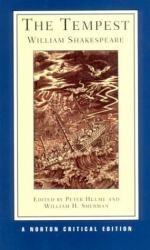|
This section contains 6,263 words (approx. 21 pages at 300 words per page) |

|
SOURCE: Phillips, James E. “The Tempest and the Renaissance Idea of Man.” Shakespeare Quarterly 15, no. 2 (spring 1964): 147-59.
In the following essay, Phillips evaluates three principal figures of The Tempest—Caliban, Ariel, and Prospero—in terms of the Renaissance conception of the tripartite soul, divided into vegetative, sensitive, and rational spheres.
Most students of The Tempest are agreed that there is more to Shakespeare's last play than charms the eye and delights the ear.1 Some have regarded its deeper meaning as autobiographical in nature, communicating Shakespeare's view of his own art and announcing his withdrawal from active professional life. Others have found it a covert commentary on England's colonizing efforts in the New World, or more generally, on the impact of civilization on primitivism. Some have explained its significance in terms of Christian concepts of ethical and political morality, some in terms of neoplatonic doctrine, and some in terms...
|
This section contains 6,263 words (approx. 21 pages at 300 words per page) |

|


